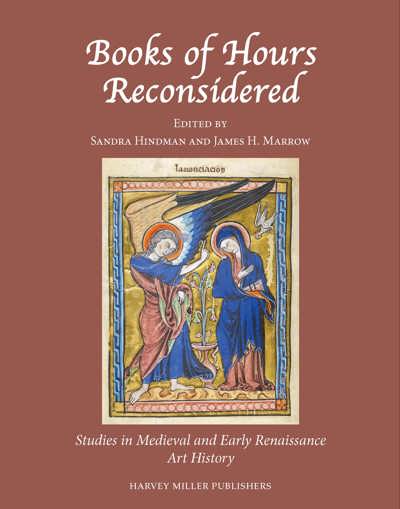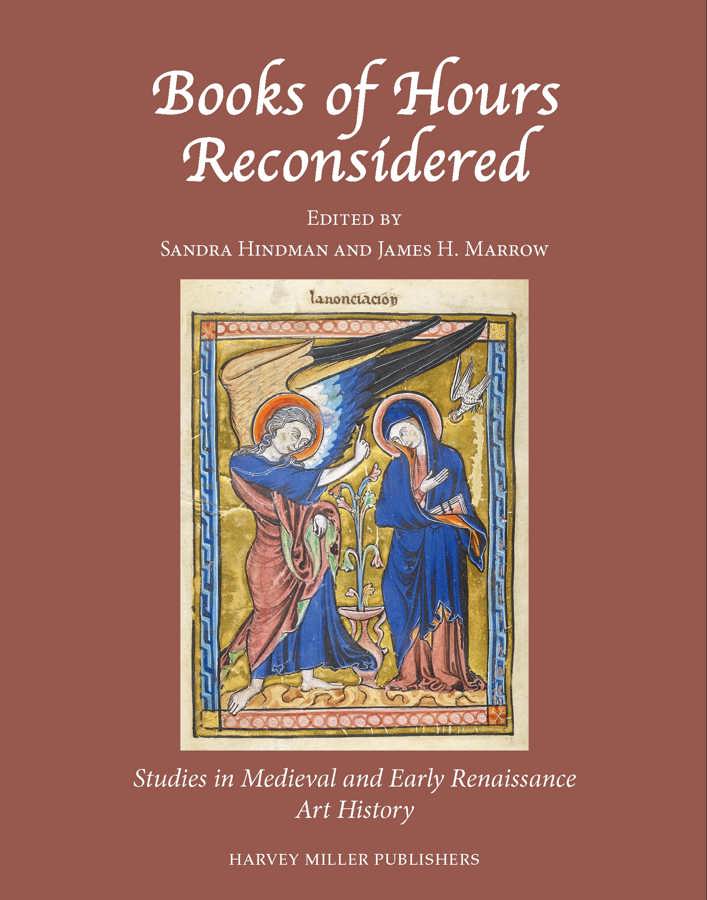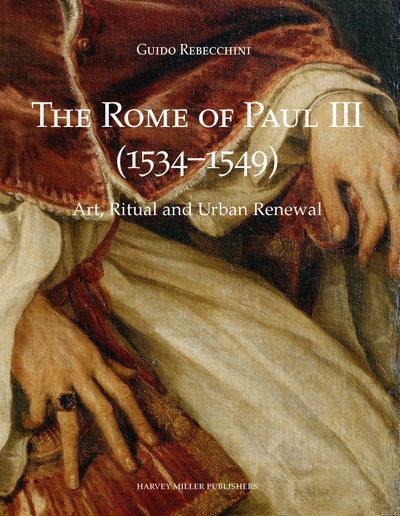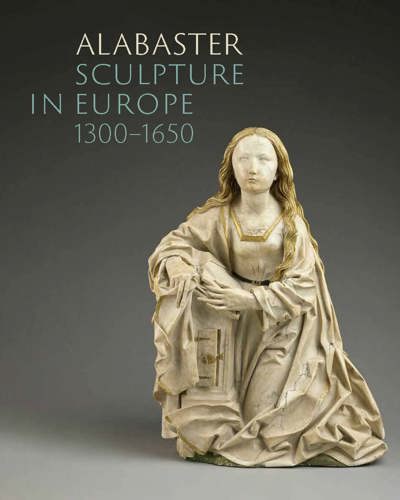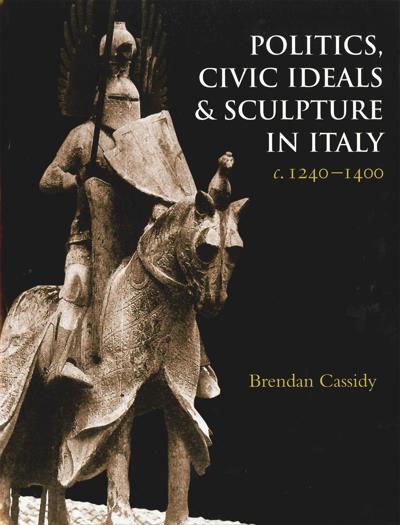
Books of Hours Reconsidered
Sandra Hindman, James Marrow (eds)
- Pages: 532 p.
- Size:220 x 280 mm
- Illustrations:226 b/w, 117 col.
- Language(s):English, French
- Publication Year:2013
- € 180,00 EXCL. VAT RETAIL PRICE
- ISBN: 978-1-905375-94-3
- Hardback
- Available
This collection of essays provides essential studies on the production, use, and evolution of the Books of Hours.
"(...) the editors have assembled contributions that are sparkling with ideas and new perspectives, as well as presenting a vast amount of new information. This publication will be a necessary point of reference for many years to come." (Rowan Watson, in: AMARC Newsletter, no. 62, May 2014, p. 20-23)
"Mit den zahlreichen Abbildungen und Aufsätzen zu interessanten Einzelaspekten wird das Buch sicher zm Standardwerk in der Stundenbuchforschung." (Gabriele Bartz, in: faksimile.de, www.faksimile.de/news/index.php?we_objectID=894)
"Never before have books of hours received such universal treatment in a single volume. (...) Books of Hours Reconsidered will surely lead scholars to reconsider their own assumptions and set out on paths of new discoveries, much as the volumes by Victor Leroquais did nearly a century ago." (Patricia Stirnemann, in Manuscripta 59: 2, 2015, p. 275-280)
Sandra Hindman is Professor Emerita of Art History, Northwestern University and Owner, Les Enluminures, New York, Paris, Chicago. She is author of many books and articles on the history of illuminated manuscripts, the transition from manuscripts to print culture, and the later appreciation of medieval manuscripts.
James H. Marrow is Professor Emeritus of Art History, Princeton University, and Honorary Keeper of Illuminated Manuscripts, The Fitzwilliam Museum (Cambridge, England). He is author of many books and articles on late medieval art, with particular interest in illuminated manuscripts and questions of meaning in works of religious art.
For over three hunderd years, more Books of Hours were made than any other type of book, even the Bible. From c. 1225, when the first Books of Hours began to appear, to 1571, when during the Counter-Reformation Pope Pius V prohibited the use of all existing Books of Hours, nearly every European family of a certain means owned a Book of Hours. Books of Hours Reconsidered present recent research on this "medieval bestseller" in twenty-one essays written by international scholars. The scholarship in this volume helps instill Books of Hours with new life and give them new meaning at a moment when interest in Books of Hours is on the rise.
Sandra Hindman, Introduction: State of the Question
I. The Prehistory of Books of Hours and the Growth of their Modern-Day Appreciation: Adelaide Bennett, Some Perspectives on the Origins of Books of Hours in France in the Thirteenth-Century – Christopher de Hamel, Books of Hours and the Art Market from the Seventeenth Century to the Present Day – Roger S. Wieck, The Hours of Catherine of Cleves: The Manuscript that Changed the World
II. Centers of Production: England, Germany, and Italy: Nigel Morgan, English Books of Hours c. 1240 – c.1480 – Jeffrey Hamburger, Another Perspective: The Book of Hours in Germany – Francesca Manzari, Italian Books of Hours and Prayer Books in the Fourteenth Century
III. Towards a History of Use: Gregory T. Clark, Beyond Saints: Variant Litany Readings and the Localization of Late Medieval Manuscript Books of Hours, the Case of the d’Orges Hours – Dr. Anne Korteweg, Books of Hours from the Northern Netherlands Reconsidered: the Uses of Utrecht and Windesheim and Geert Grote’s Role as a Translator
IV. Problems of Workshops: Marc Gil, Picardie-Hainaut: Quelques remarques sur les livres d'heures produits par le Maitre de Rambures et Simon Marmion – Anne Margreet W. As-Vijvers, Manuscript Production in a Carmelite Convent: The Case of Cornelia von Wulfskercke – Marie-Françoise Damongeot, La circulation des modèles iconographiques: l’exemple d’un livre d’Heures parisien (BnF MS N.a.l.3115) – Dr Mara Hofmann, Matteo de Milano; Between Ferrara and Rome--The Hours of Dionora of Urbino (London, British Library, Yates Thompson 7) – Saskia von Bergen, The Use of Stamps in Bruges Book Production – Eberhard König, Twins in Attribution: A New Fashion or a Means to Better Understanding? The Case of the Grandes Heures de Rohan
V. Cycles of Illustration and Their Texts: James Marrow, Superimposed Cycles of Marginal Illustration in Late Medieval Horae: Function and History – Dr. Klara H. Broekhuijsen, Decoration Programmes in Books of Hours by the Masters of the Dark Eyes – Bronwyn Stocks, Devotional Emphasis and Distinctive Variations in the Illustration of the Hours of the Virgin in Italian Books of Hours
VI. Books of Hours in the Age of Print: Todor Petev, A Group of Hybrid Manuscripts Illustrated with Woodcuts from Antwerp – Thierry Claerr, L’édition d’Heures du 21 avril 1505, une œuvre charnière dans la production de Thielman Kerver? – Ariane Bergeron-Foote, De la fortune de quatre bois gravés: de Paris 1519 à Rouen c. 1593 – Elizabeth A.R. Brown, The Devotional Books of Claude Gouffier: The Morgan Hours (New York, Morgan Library and Museum, M. 538) – Mary and Richard Rouse, Post-Mortem Inventories as a Source for the Production of Manuscripts and Printed Books of Hours
Notes on the Contributors – Bibliography
